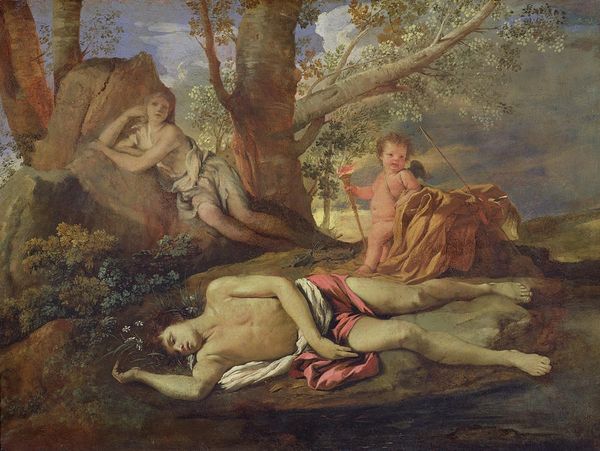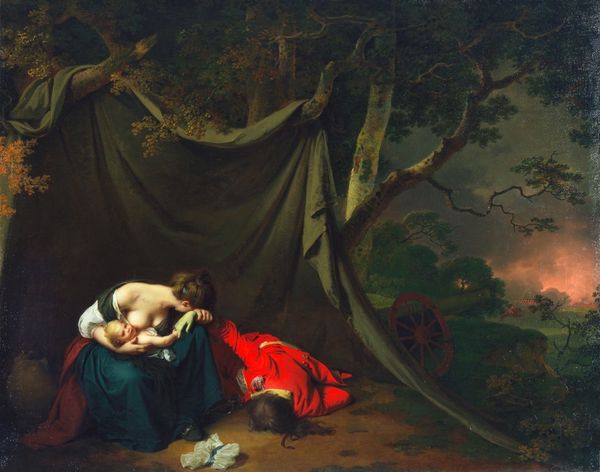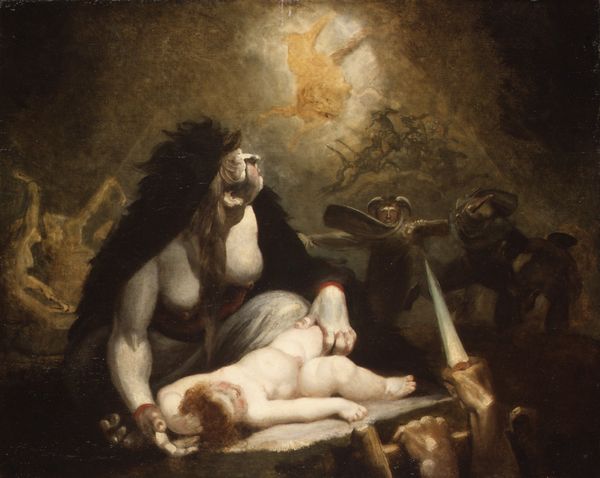
Copyright: Public Domain: Artvee
Curator: Here we see Benjamin West’s “The Death of Procris,” an oil painting completed around 1770. It presents a dramatic scene set within a lush landscape. Editor: It's striking how West renders this sense of quiet tragedy. Procris lies there in such stark stillness, contrasted with the overbearing canopy and draped figure lurking above her. Curator: Indeed, the iconography tells a tragic tale from Greek mythology. Procris, accidentally slain by her husband Cephalus with a javelin, symbolizes love betrayed and the dangers of jealousy. That fateful javelin lies discarded just beyond her outstretched fingers, visually echoing her broken life. Editor: Notice how West contrasts the rough texture of the forest floor against the smoothness of Procris’ skin. And the saturated pigments—especially that blue—really draws the eye to the cascading drapery pooling around her body. The craftmanship evident in building up those layers of oil must have been intensive. Curator: That cool blue visually translates to the coolness of death, an eternal sleep but also a representation of chastity and the eternal feminine. But even more arresting is that red draped figure watching Procris as she exhales her last breaths; Cephalus represents guilt and mourning. He's forever marked by this visual symbol of consequence. Editor: What's most impressive for me, personally, is West's ability to imbue classical themes with such contemporary visual materiality, rendering it relevant and relatable to a rapidly shifting 18th-century audience concerned with mortality and loss. Curator: Precisely! West captured timeless human emotions. The layers of cultural memory embedded in classical stories meet us right here, forcing contemplation on mortality and destiny, forever linked through these potent visual symbols. Editor: Reflecting on his choices reveals such an economy of storytelling, the way West manipulates not just materials, but also viewers’ very real emotional investments. Curator: In that regard, the image endures.
Comments
No comments
Be the first to comment and join the conversation on the ultimate creative platform.













